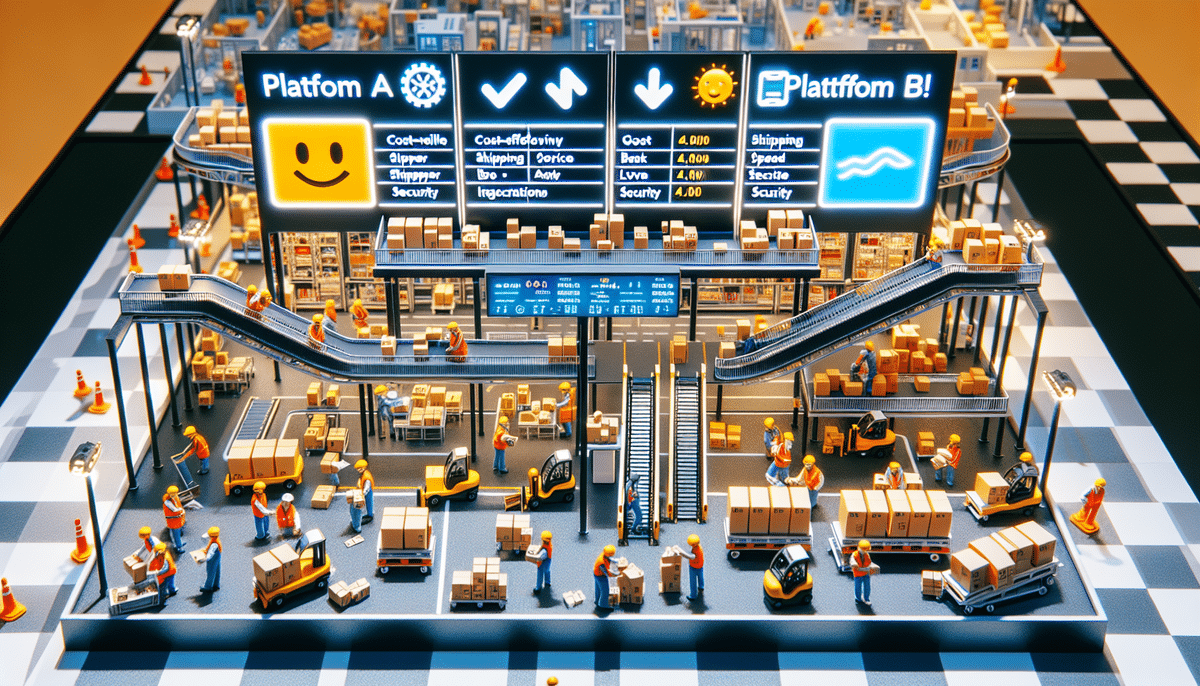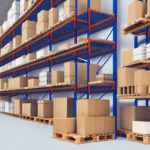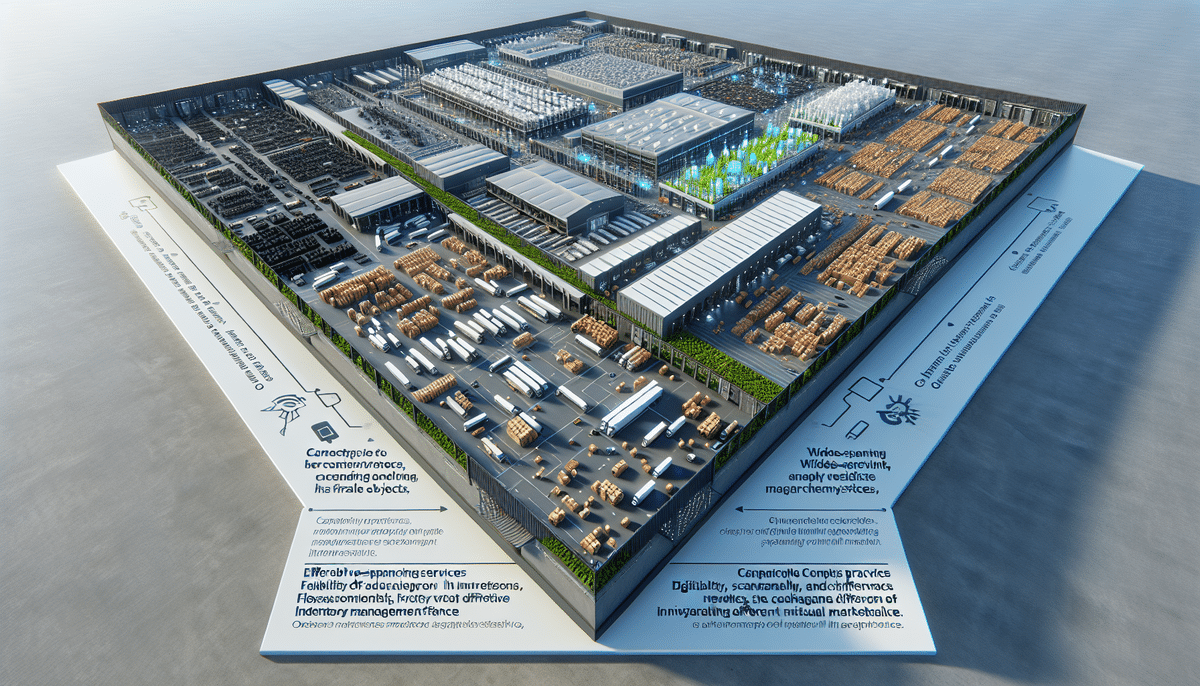Red Stag Fulfillment vs Amazon FBA: Choosing the Best Fulfillment Service for Your E-commerce Business
In the competitive world of e-commerce, efficient and reliable order fulfillment is crucial for success. Fulfillment involves the entire process of receiving, processing, and delivering customer orders. Selecting the right fulfillment partner can significantly impact your business's operational efficiency and customer satisfaction. Two leading options in the market are Red Stag Fulfillment and Fulfillment by Amazon (FBA). This comprehensive comparison explores their features, advantages, and drawbacks to help you make an informed decision.
Understanding Red Stag Fulfillment
Red Stag Fulfillment is a third-party logistics (3PL) provider specializing in tailored fulfillment solutions for e-commerce businesses. Known for its high accuracy and reliability, Red Stag offers a suite of services including:
- Receiving and Inventory Management: Efficient handling and tracking of inventory.
- Order Processing: Accurate picking, packing, and shipping of orders.
- Kitting and Assembly: Custom packaging and assembly services to meet specific business needs.
- Returns Management: Streamlined processing of returns to maintain customer satisfaction.
Red Stag leverages advanced technology for real-time inventory tracking and reporting, providing businesses with transparency and control over their stock levels. Their commitment to quality control and damage prevention sets them apart, ensuring that products are meticulously inspected and packaged.
Exploring Fulfillment by Amazon (FBA)
Fulfillment by Amazon (FBA) is a service that allows e-commerce businesses to outsource their order fulfillment to Amazon. Businesses send their products to Amazon's fulfillment centers, and Amazon handles storage, packing, shipping, and customer service. Key benefits of FBA include:
- Prime Eligibility: Products are eligible for Amazon Prime's fast and free two-day shipping, enhancing visibility and appeal to customers.
- Scalability: FBA enables businesses to scale operations quickly without investing in additional infrastructure.
- Access to Amazon's Customer Base: Leverage Amazon's extensive customer reach to boost sales and brand recognition.
FBA integrates seamlessly with various e-commerce platforms, making it a convenient choice for businesses looking to streamline their fulfillment processes.
Comparative Analysis: Pros and Cons
Red Stag Fulfillment
Pros:
- Exceptional accuracy rate of 99.98%, minimizing order errors.
- Damage-free guarantees ensure products reach customers in perfect condition.
- Personalized service tailored to individual business needs.
- Advanced technology for real-time tracking and inventory management.
Cons:
- Higher pricing compared to some other fulfillment options.
- Complex technology systems may pose integration challenges for some businesses.
Fulfillment by Amazon (FBA)
Pros:
- Access to Amazon's vast global customer base.
- Prime eligibility offers customers fast and reliable shipping options.
- Facilitates rapid scaling of business operations.
- Comprehensive tools and services to optimize listings and drive sales.
Cons:
- Fees can accumulate, including storage and per-unit handling fees.
- Strict packaging and preparation requirements may be burdensome for smaller businesses.
- Limited control over the shipping process, potentially impacting customer experiences.
- Long-term storage fees for inventory held beyond 365 days.
Pricing Comparison
Both Red Stag Fulfillment and FBA charge fees for storage, picking, packing, and shipping. However, their fee structures differ:
- Red Stag Fulfillment: Charges a monthly storage fee based on the physical space your products occupy in their warehouse. Additional services like kitting and assembly incur extra costs.
- FBA: Fees are based on the duration products are stored (monthly storage fees) and per-unit handling fees for picking and packing. Long-term storage fees apply to products stored for over a year.
For businesses with high order volumes and multiple units per order, FBA's per-unit fees can add up, potentially making Red Stag a more cost-effective option for smaller to medium-sized enterprises.
Cost-Effectiveness: Which Option Saves You More?
The most cost-effective choice between Red Stag Fulfillment and FBA depends on your business's specific needs:
- Red Stag Fulfillment: Ideal for small to medium-sized businesses with specialized fulfillment requirements and smaller inventory sizes. The flat fee per order for picking and packing can be more economical for high-order accuracy and personalized services.
- FBA: Suited for larger businesses with high sales volumes that can benefit from Amazon's extensive logistics network and Prime eligibility. The scalability and access to a vast customer base can drive significant sales growth.
Consider additional costs such as shipping fees, return handling, and potential long-term storage fees when evaluating cost-effectiveness.
Shipping Speed and Customer Experience
Shipping speed significantly influences customer satisfaction and repeat business:
- FBA: Offers Amazon Prime's two-day shipping, providing a competitive edge in delivering products quickly to customers.
- Red Stag Fulfillment: Provides expedited shipping options tailored to your business's needs, ensuring timely delivery even for urgent orders.
Your choice should align with your customers' expectations and your ability to meet delivery timelines.
Customer Service and Support
Effective customer service is essential for resolving issues and maintaining business relationships:
- Red Stag Fulfillment: Offers personalized customer service with dedicated account managers, ensuring responsive and tailored support for your business.
- FBA: While offering extensive resources, some users report challenges in accessing personalized support, which can affect problem resolution times.
Evaluate the level of support you require and how each provider meets those needs.
Integration and Compatibility
Seamless integration with your existing e-commerce platforms and systems enhances operational efficiency:
- Red Stag Fulfillment: Integrates with major platforms like Shopify and BigCommerce, as well as ERP and WMS systems, offering flexibility for various business setups.
- FBA: Naturally integrates with Amazon's marketplace and supports popular e-commerce platforms, simplifying the fulfillment process for businesses already leveraging Amazon's ecosystem.
Ensure that the fulfillment service you choose aligns with your current and future technological infrastructure.
Security Measures
Protecting your inventory and customer data is paramount:
- Red Stag Fulfillment: Utilizes advanced security protocols, including secure warehouse facilities and strict access controls to prevent theft and damage.
- FBA: Maintains robust security standards with secure storage environments and comprehensive employee screening processes.
Both providers prioritize security, but it's important to assess which aligns best with your specific security requirements.
Customer Feedback and Reviews
Customer reviews offer valuable insights into real-world performance:
- Red Stag Fulfillment: Receives high praise for exceptional accuracy, personalized service, and reliable delivery, making it a trusted partner for many businesses.
- FBA: While lauded for its efficiency and extensive reach, some users express concerns over high fees and less personalized customer support.
Consider seeking out detailed reviews and case studies to understand how each service performs in scenarios similar to your business.
Switching Between Fulfillment Services
Transitioning from one fulfillment provider to another involves careful planning:
- From FBA to Red Stag Fulfillment: Requires coordination to migrate inventory, update integration settings, and adjust logistical processes to align with Red Stag's operations.
- From Red Stag Fulfillment to FBA: Involves sending inventory to Amazon's fulfillment centers, configuring FBA settings, and training your team on Amazon's fulfillment protocols.
Both providers offer support during the transition phase, but it's crucial to ensure minimal disruption to your operations by meticulously planning the switch.
Conclusion: Making the Right Choice for Your Business
Both Red Stag Fulfillment and Fulfillment by Amazon (FBA) offer robust solutions for e-commerce businesses, each with its unique strengths and potential drawbacks:
- Choose Red Stag Fulfillment if: You require highly accurate and personalized fulfillment services, have specialized packaging needs, or operate a small to medium-sized business with moderate inventory.
- Choose Fulfillment by Amazon (FBA) if: You seek to leverage Amazon's extensive logistics network, require rapid scalability, and want access to Amazon's vast customer base to drive sales growth.
Ultimately, the best choice depends on your specific business needs, budget constraints, and long-term growth objectives. Carefully evaluate each option's features, costs, and customer support to determine which fulfillment service aligns best with your e-commerce strategy.




















